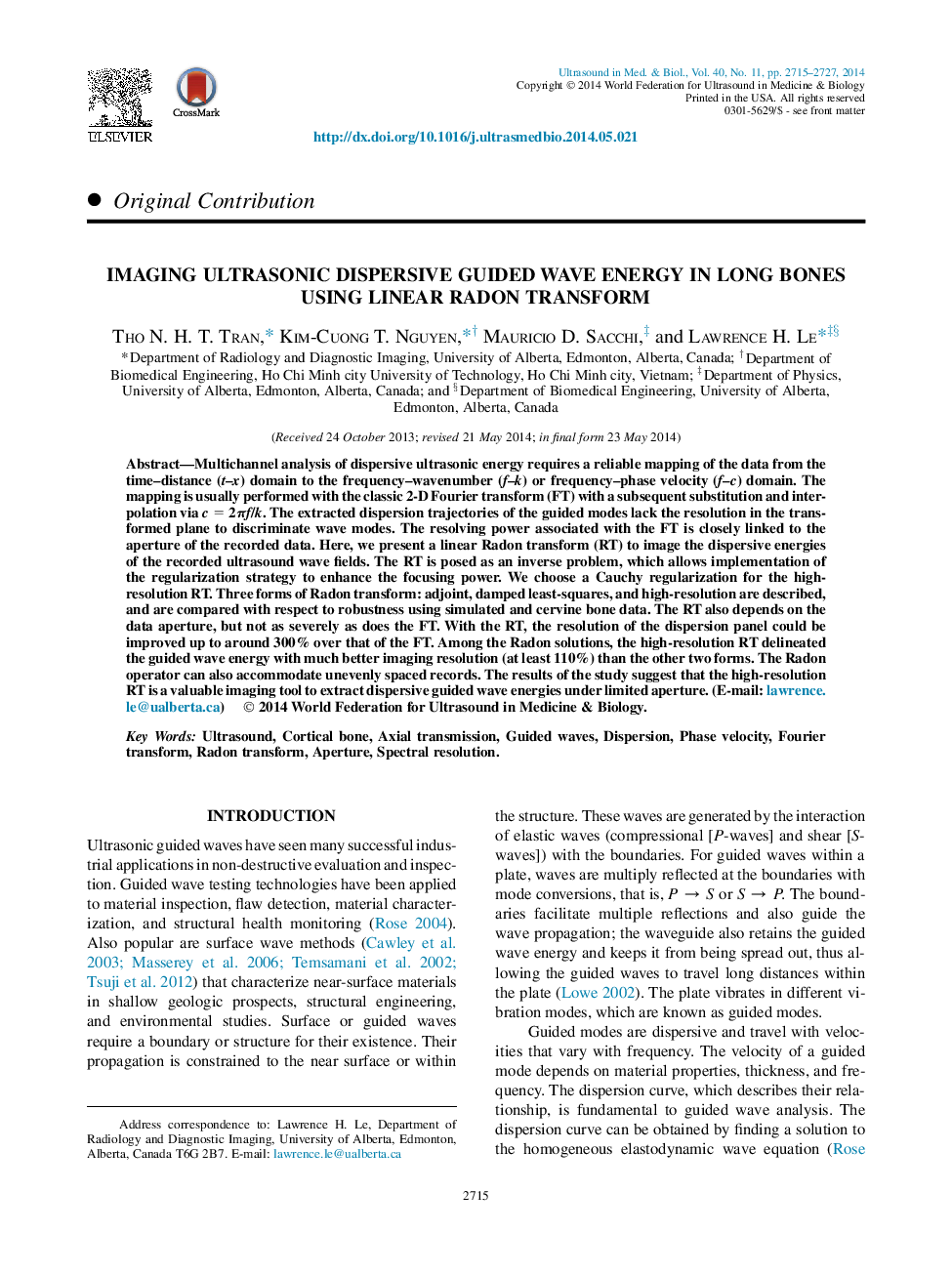| Article ID | Journal | Published Year | Pages | File Type |
|---|---|---|---|---|
| 10691539 | Ultrasound in Medicine & Biology | 2014 | 13 Pages |
Abstract
Multichannel analysis of dispersive ultrasonic energy requires a reliable mapping of the data from the time-distance (t-x) domain to the frequency-wavenumber (f-k) or frequency-phase velocity (f-c) domain. The mapping is usually performed with the classic 2-D Fourier transform (FT) with a subsequent substitution and interpolation via c = 2Ïf/k. The extracted dispersion trajectories of the guided modes lack the resolution in the transformed plane to discriminate wave modes. The resolving power associated with the FT is closely linked to the aperture of the recorded data. Here, we present a linear Radon transform (RT) to image the dispersive energies of the recorded ultrasound wave fields. The RT is posed as an inverse problem, which allows implementation of the regularization strategy to enhance the focusing power. We choose a Cauchy regularization for the high-resolution RT. Three forms of Radon transform: adjoint, damped least-squares, and high-resolution are described, and are compared with respect to robustness using simulated and cervine bone data. The RT also depends on the data aperture, but not as severely as does the FT. With the RT, the resolution of the dispersion panel could be improved up to around 300% over that of the FT. Among the Radon solutions, the high-resolution RT delineated the guided wave energy with much better imaging resolution (at least 110%) than the other two forms. The Radon operator can also accommodate unevenly spaced records. The results of the study suggest that the high-resolution RT is a valuable imaging tool to extract dispersive guided wave energies under limited aperture.
Keywords
Related Topics
Physical Sciences and Engineering
Physics and Astronomy
Acoustics and Ultrasonics
Authors
Tho N.H.T. Tran, Kim-Cuong T. Nguyen, Mauricio D. Sacchi, Lawrence H. Le,
